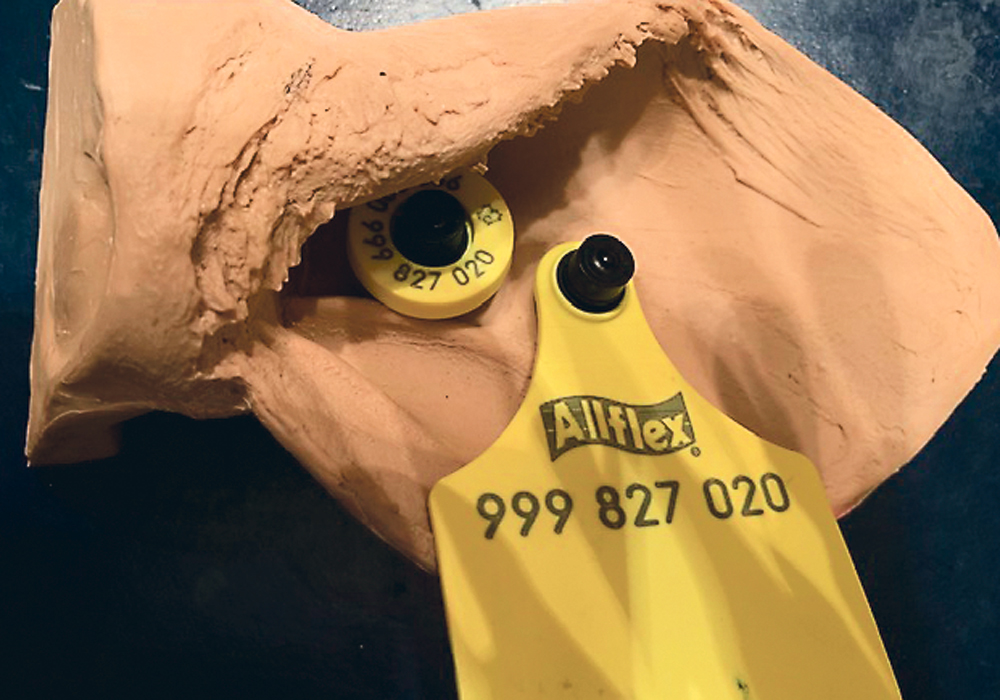The national cattle identification system has been around for slightly less than 20 years.
Developers have gone through lots of growing pains and are starting to fine-tune the system. Producers are deriving more benefits from using the farm management systems linked to readers and scales, which are based on the ability to read the RFID tags. From lost animals to identification at export to transport to traceability, a lot hinges on the tag being present so they can be read by scanners.
Some purebred breeds are using different coloured tag backs to indicate differences, such as Angus green backs and Simmental blue backs. The standard tags are still yellow and many producers, because of the different sire groups, as well as some of the purebred breeders, are sticking with straight yellow.
Read Also

Beef check-off collection system aligns across the country
A single and aligned check-off collection system based on where producers live makes the system equal said Chad Ross, Saskatchewan Cattle Association chair.
Many purebred breeders raise two different purebred breeds so they have elected to stay yellow as well. All these things help with marketing or differentiation.
The technology today has improved to the point where it is just about fool proof. I have not seen a tag fail in years.
Advances in ability to read tags at the speed of commerce is getting better. The ultra-high frequency tags are almost at the level where we could stick a wand into a cattle liner, wave it around and pick up all the cattle in the truck. This would especially facilitate export of cattle out of the country and also traceability of cattle being trucked around the country.
There are many other conditions that will become easier for producers to do as reader technology evolves.
The next step is to improve the lifespan of tags. Currently, there is an 18 percent loss after about six years, which is the age many beef cattle reach.
Breeding bulls are usually done by about five to six years of age, on average, so we need to have tags we know are going to last at least that long. From wear and tear to ultraviolet light to freezing and thawing, there is a lot tag manufacturers must overcome.
Currently, one must try and put the tag in the area least likely to be caught or ripped out. The RFID tag should be put one-quarter of the way out from the head and in the middle, so the male back end is behind the ear and the thick radio frequency part is in the inside of the ear.
This has been found to increase longevity. If placed in the top of the ear the backing frequently gets caught on things. I have seen many tags almost rubbed too thin by bulls. They are hard on tags, especially the dangle tags from fighting, rubbing or throwing up dirt with their head.
As well, it will be interesting to see if the ultraviolet light bothers some of the new coloured backs. Both the yellow and white tags have been good that way, so time will tell.
More information is needed as to the ideal age to tag and not get the tag too loose. Most animals receive dangle tags by a day or two of age.
Another question many of us have is whether it is better to put the dangle tag and RFID tag in different ears. I think so, but don’t know that for sure.
Also, producers should not put the new tag in the hole of the lost tag. The hole has been enlarged and those tags are more likely to be lost.
To attach tags, make sure the area is clean and the tagger is clean and working properly. I like the new green Allflex taggers so the male and female parts of the tag perfectly line up. Also keep the tags warm because in cold weather, the force is too much to get them in and the tags may be damaged.
Putting microchips in cattle is being discussed as an alternative to tags, but the potential exists for chips to end up in the food chain.
My guess is that we will continue to increase the retention of tags through proper placement at the proper age and continual improvement of tag quality.
If we can keep improving on the retainability of tags, we may be able to incorporate the technology with other devices that might measure temperature and ruminal movements, which could detect disease earlier.
It is great to see tags starting to give back valuable information to owners and the beef breeds seeing this as a valuable step in differentiating themselves. The system is not perfect yet but it is a long way ahead of the United States system and is positive from a world trade and food safety standpoint.
If you have any tips or tricks leading to tag retention, whether it be RFID tags or dangle tags, I am sure the Canadian Cattle Identification Agency or tag manufacturers would love to know.
Roy Lewis works as a technical services veterinarian part time with Merck Animal Health in Alberta.

















